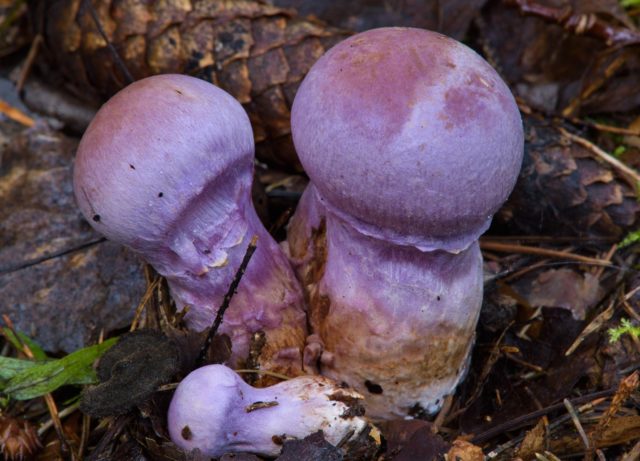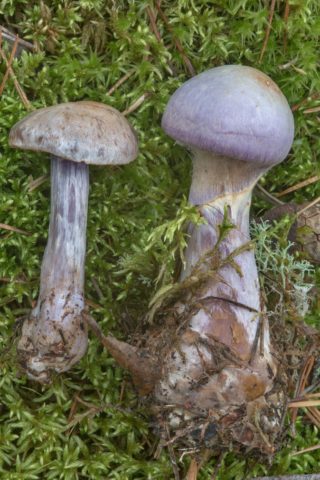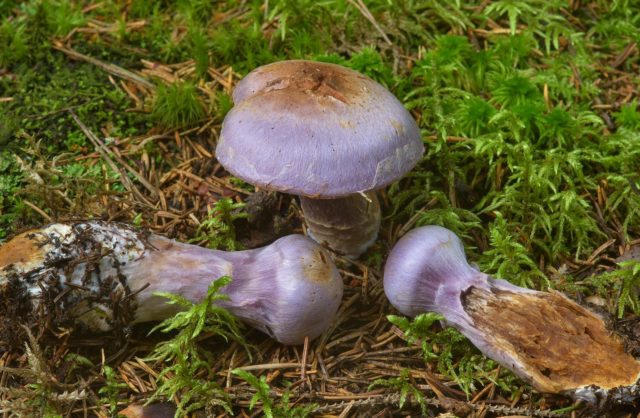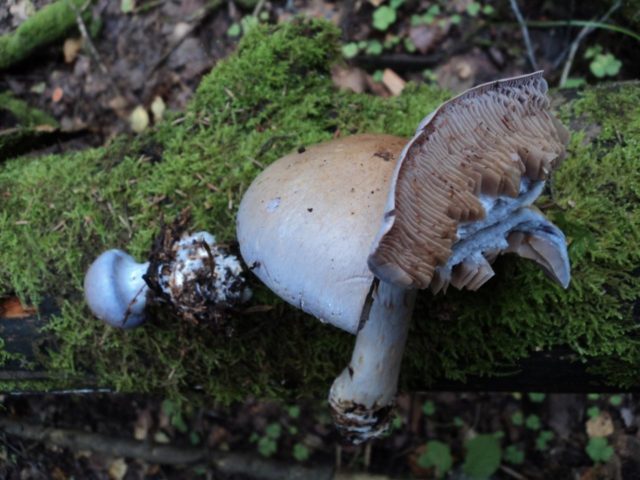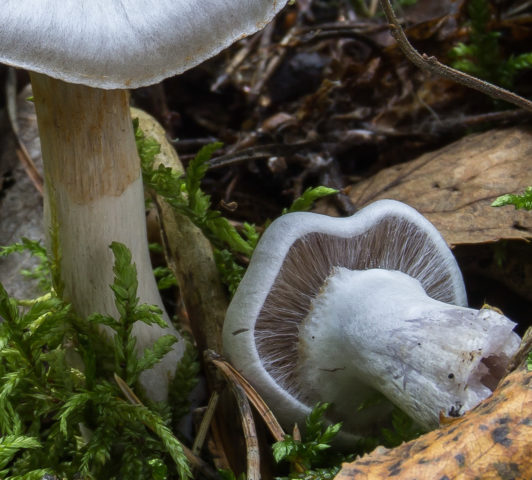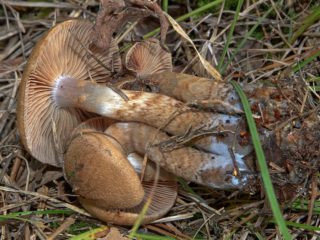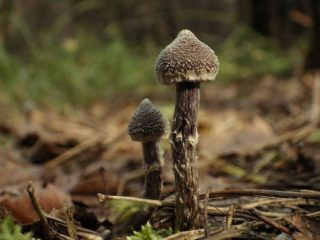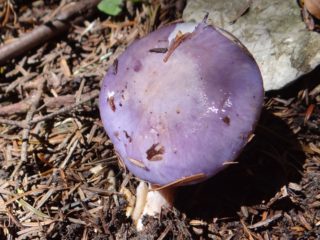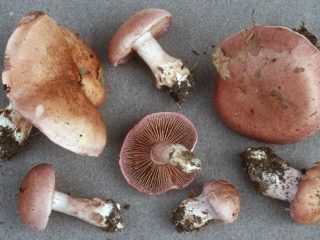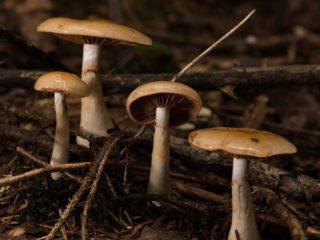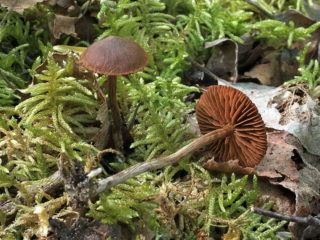Content
Goat webcap - a representative of the webcap genus, belongs to the category of inedible and poisonous mushrooms. Known by several names: Cortinarius traganus, the smelly or goat's webcap. The species definition was obtained due to a sharp specific smell.
What does a goat webcap look like?
Quite a large mushroom with a purple color at the beginning of growth; in more mature specimens, the color brightens, acquires a bluish tint. A distinctive feature is the presence of a purple, dense, cobweb-like general velum, which completely covers young specimens.
Over time, the bedspread breaks, forming rings on the leg and flakes along the edge of the cap.
Description of the hat
As it ripens, the shape of the cap changes. In young specimens, it is rounded with concave edges, tightly covered with a veil. Then the velum breaks, the shape becomes hemispherical, in adult specimens it opens completely.
In the photo, the goat webcap at the beginning of growth and during the ripening period, the description of the fruiting body is as follows:
- the diameter of the cap is 3-10 cm;
- the surface is velvety, unevenly colored, the central part is darker, cracking is possible;
- the lamellar layer is lilac; as the spores mature, it becomes light brown;
- plates are frequent, long, well fixed to the lower part; along the edge of the cap there are shorter ones in the form of rudiments.
The pulp is firm, pale purple, thick.
The people compare the goat's webcap with the specific aroma of a goat of reproductive age.
Leg description
The leg of the goat's spider web is thick, solid. There is a pronounced tuberous thickening near the mycelium.
The shape is cylindrical. The surface is smooth with the remains of the bedspread. The color is one tone lighter than the cap; at the site of spore maturation, the areas acquire a dark yellow tint. Leg height - up to 10 cm.
Where and how it grows
The fruiting period of goat's webcap is from early summer to October. Grows in mixed forests, where pine trees are found, in coniferous forests. It settles on a moss litter in shaded, humid places. Distributed throughout Europe. In Russia, it occurs in the boreal climatic zone. The main accumulation is in the Murmansk, Sverdlovsk, Yaroslavl regions, and is also found in the Leningrad region. Grows singly or in small groups.
Is the mushroom edible or not
This representative belongs to the inedible poisonous mushrooms. Chemical toxicity information is conflicting. But in the case of this representative, the assessment of the degree of toxicity does not matter. The fruiting body has such a specific repulsive odor that consumption is simply impossible. This only intensifies during heat treatment.
Doubles and their differences
The camphor spider web is considered to be similar in appearance to the smelly spider web.
Outwardly, the species are absolutely identical, the time and place of fruiting are also the same. They differ only in smell; in the double, it resembles camphor.Refers to inedible mushrooms.
The webcap is white-violet lighter in color, the veil is completely white.
It is rarely found in coniferous forests. It grows mainly under birch trees. The smell is unpleasant, but less pronounced. The mushroom is conditionally edible.
Conclusion
The goat webcap is an inedible poisonous species with an unpleasant chemical odor that intensifies during processing. Grows in temperate climates (June to October) in mixed or coniferous areas. It settles in families mainly under the pine trees on a moss cushion.
